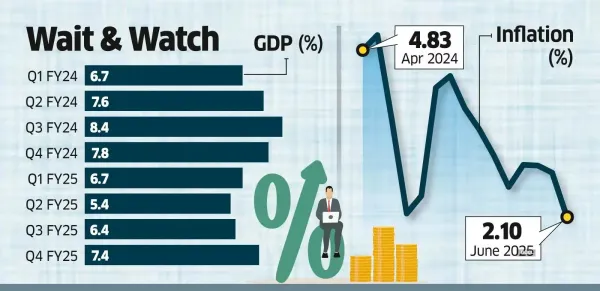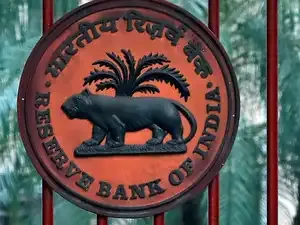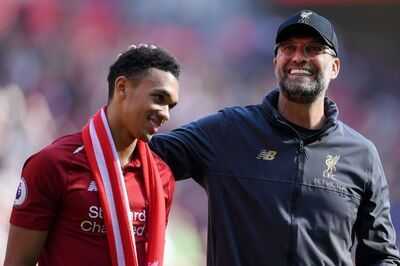Mumbai: Economists are divided on the trajectory of interest rate cuts. While some cite six-year low inflation as grounds for another rate cut in the upcoming August policy, the majority advocate for maintaining the status quo. Those calling for a pause argue that it is prudent to wait and assess inflation trends in the coming quarter and monitor developments around the US trade deal.
Economists shared these perspectives with the Reserve Bank of India governor Sanjay Malhotra, deputy governor Poonam Gupta and her team during customary pre-policy consultative meetings held last week.
Since February, the RBI has lowered the repo rate by 100 basis points, or a percentage point, to 5.5%. It has also announced lowering cash reserve ratio by 100 bps in a phased manner beginning September 2025, which is estimated to release ₹2.5 lakh crore in the banking system.
When the central bank's six-member Monetary Policy Committee (MPC) meet from August 4 to 6, it is expected to deliberate on the policy repo rate using two key data points: the June quarter GDP projections and the latest retail inflation figures.
Consumer Price Index-based inflation slowed to 2.1% in June, well below the RBI's medium-term target of 4%. Meanwhile, estimates suggest that economic growth for the April-June 2025 quarter is tracking above the RBI's projection of 6.5%.
"After having given a steroid dose in the last policy (a 50-bps repo reduction in June), why cut when growth is not faltering? The timing also is not very convincing; there is a lot of uncertainty trade policy-wise and a lot of things are impending," said an economist who attended one of the RBI meetings.
Ratings firm ICRA expects GDP growth to be between 6.0% and 6.5% in the first quarter of fiscal 2026, according to a report published last week. IDFC First Bank does not expect any revision to the RBI's FY26 GDP estimate of 6.5%, saying "High frequency indicators continue to show moderation in urban consumption."
Official GDP data for the quarter is expected in late August.

"We maintain a view of a pause on rates. A 25-bps cut would likely cause real rates (based on 12M ahead inflation) to fall sharply for FY27-which the MPC would prefer to avoid," said Anubhuti Sahay of Standard Chartered in a report published on July 22.
Speaking at an event on Friday, governor Malhotra reiterated that price stability remained the central bank's primary objective. He remarked that while the RBI has won the "battle" against inflation, the war continues.
Given the forward-looking nature of monetary policy, decisions will be based on data reflecting a six-to 12-month outlook rather than current figures. "Monetary policy, being data driven and more on the outlook, will be guided by the revised numbers, if any, and take a call," Malhotra said.
The RBI has projected retail inflation to be 3.7% for the current fiscal year, though the projection for the fourth quarter remains above 4% at 4.4%. "It may be, you know, revised downwards given the fact that the numbers that are coming in are lower than what we had projected even for Q1," Malhotra added.
"If the food prices are lower, inflation would be around 4%. It's all statistical right now, and the base effect would be revised next year and because of low food inflation now, it could lead to lower inflation in Q1FY27," said another economist who has conveyed to the RBI that a rate cut in August would benefit the economy.
DBS Bank expects another 50-bps rate cut this calendar year, with half that in August. "The ongoing disinflationary phase, coupled with moderation in growth indicators, provides room for the central bank to frontload rate cuts... Factoring in the current inflation series, we expect unfavourable base effects to prop FY27 inflation to average 4.3% yoy vs 3.0% in FY26," Radhika Rao of DBS Bank said in a report published on July 25
The RBI will release its inflation projections for Q1FY27 for the first time on August 6.
Economists shared these perspectives with the Reserve Bank of India governor Sanjay Malhotra, deputy governor Poonam Gupta and her team during customary pre-policy consultative meetings held last week.
Since February, the RBI has lowered the repo rate by 100 basis points, or a percentage point, to 5.5%. It has also announced lowering cash reserve ratio by 100 bps in a phased manner beginning September 2025, which is estimated to release ₹2.5 lakh crore in the banking system.
When the central bank's six-member Monetary Policy Committee (MPC) meet from August 4 to 6, it is expected to deliberate on the policy repo rate using two key data points: the June quarter GDP projections and the latest retail inflation figures.
Consumer Price Index-based inflation slowed to 2.1% in June, well below the RBI's medium-term target of 4%. Meanwhile, estimates suggest that economic growth for the April-June 2025 quarter is tracking above the RBI's projection of 6.5%.
"After having given a steroid dose in the last policy (a 50-bps repo reduction in June), why cut when growth is not faltering? The timing also is not very convincing; there is a lot of uncertainty trade policy-wise and a lot of things are impending," said an economist who attended one of the RBI meetings.
Ratings firm ICRA expects GDP growth to be between 6.0% and 6.5% in the first quarter of fiscal 2026, according to a report published last week. IDFC First Bank does not expect any revision to the RBI's FY26 GDP estimate of 6.5%, saying "High frequency indicators continue to show moderation in urban consumption."
Official GDP data for the quarter is expected in late August.

"We maintain a view of a pause on rates. A 25-bps cut would likely cause real rates (based on 12M ahead inflation) to fall sharply for FY27-which the MPC would prefer to avoid," said Anubhuti Sahay of Standard Chartered in a report published on July 22.
Speaking at an event on Friday, governor Malhotra reiterated that price stability remained the central bank's primary objective. He remarked that while the RBI has won the "battle" against inflation, the war continues.
Given the forward-looking nature of monetary policy, decisions will be based on data reflecting a six-to 12-month outlook rather than current figures. "Monetary policy, being data driven and more on the outlook, will be guided by the revised numbers, if any, and take a call," Malhotra said.
The RBI has projected retail inflation to be 3.7% for the current fiscal year, though the projection for the fourth quarter remains above 4% at 4.4%. "It may be, you know, revised downwards given the fact that the numbers that are coming in are lower than what we had projected even for Q1," Malhotra added.
"If the food prices are lower, inflation would be around 4%. It's all statistical right now, and the base effect would be revised next year and because of low food inflation now, it could lead to lower inflation in Q1FY27," said another economist who has conveyed to the RBI that a rate cut in August would benefit the economy.
DBS Bank expects another 50-bps rate cut this calendar year, with half that in August. "The ongoing disinflationary phase, coupled with moderation in growth indicators, provides room for the central bank to frontload rate cuts... Factoring in the current inflation series, we expect unfavourable base effects to prop FY27 inflation to average 4.3% yoy vs 3.0% in FY26," Radhika Rao of DBS Bank said in a report published on July 25
The RBI will release its inflation projections for Q1FY27 for the first time on August 6.







